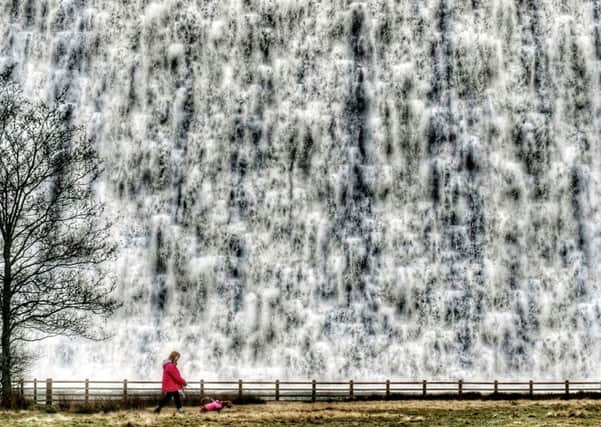Winter waterfall heralds the arrival of spring in the Peak District


But, whisper it quietly, it feels as though the worst is now behind us and with the first green shoots of spring emerging there is the anticipation of warmer, and hopefully better, days just around the corner.
Not that it’s been all bad. In recent months the wintry weather has created some magical scenes, transforming dull brown landscapes into strange icy kingdoms smothered with thick dollops of snow.
Advertisement
Hide AdAdvertisement
Hide AdEven during the recent thaw there’s been plenty of impressive sights to behold, such as this great torrent of meltwater cascading over a dam wall in front of walkers.
This is Derwent Dam, located at the tip of Derwent Reservoir in the Peak District, about halfway between Glossop and Sheffield.
The impressive reservoir is around 1.5 miles long running broadly north to south, with Howden Dam at the northern end and Derwent Dam at the south.
Howden and Derwent, were constructed between 1901 and 1916 and this was such a mammoth project that a village called Birchinlee, or “Tin Town”, was specially constructed to house the 1,000 or so builders, while a narrow-gauge railway was built between Howden Dam and the Midland Railway at Bamford.
Advertisement
Hide AdAdvertisement
Hide AdDerwent dam is one of three in the Derwent Valley which were made famous after being used in training missions for the Dambusters raid on Germany during the Second World War.
They were among those used by the Lancaster bomber pilots to practice bombing runs, apparently much to the annoyance of the local population at the time, because they bore close resemblance to the German dams in the Ruhr valley.
It’s small, but not insignificant, place in Britain’s wartime story is assured, though these days it is associated with somewhat quieter pursuits and remains mightily impressive, whatever the season.
Technical details: Lumix G9 35-100mm lens iso 200, f5.6, shutter speed 1/320 sec).